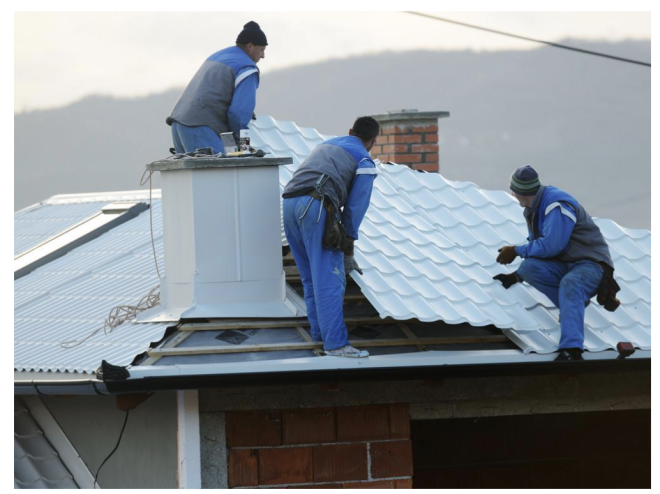- Change theme
Silent Threats Above: Why Roof Inspections and Water Damage Prevention Matter

Many homeowners underestimate the importance of regular roof inspections, often waiting until visible problems arise.
02:41 29 May 2025
The Hidden Costs of Ignoring Roof Inspections
Many homeowners underestimate the importance of regular roof inspections, often waiting until visible problems arise. According to a survey, nearly 23% of homeowners confess that they never inspect their roof or only do so when a problem becomes apparent. This neglect can lead to significant issues that not only affect the roof's integrity but also have costly implications for the entire home. Damage that remains undetected over time can result in expensive repairs and even impact home resale value. Ensuring regular inspections can prevent these unwanted financial burdens.
Roofs are susceptible to a range of weather conditions that can deteriorate their structure over time. For instance, harsh winds, heavy rainfall, and even intense sunlight can contribute to roof wear and tear. By conducting routine inspections, homeowners can identify potential vulnerabilities early. Addressing these issues can mitigate long-term damage, potentially saving thousands of dollars in repairs. Moreover, regular maintenance can extend the lifespan of a roof, securing a home's protection for decades.
Water damage is a pervasive problem that can be exacerbated by neglected roof inspections. According to Krapf Legal, water damage affects approximately 14,000 individuals in the U.S. every day. Water infiltration, often stemming from roof issues, can lead to mold growth, compromised building structures, and damaged personal belongings. This illustrates the critical nature of addressing potential roof issues before they result in serious water damage. Taking proactive steps with roof maintenance is essential for safeguarding one's home environment.
Understanding Roof Longevity and Types
The longevity of a roof can vary greatly depending on multiple factors, including the materials used and environmental conditions. According to Roofers Guild, while a typical roof is expected to last anywhere between 25 and 50 years, this lifespan can significantly differ based on construction and property type. Different materials offer various levels of durability, impacting the roof's overall resilience to weathering. For example, metal roofs tend to last longer compared to asphalt shingles. Understanding these differences can help homeowners make informed decisions about their roof's maintenance and potential replacements.
It is crucial for homeowners to familiarize themselves with the type of roof installed on their home. Each type requires specific maintenance practices that are essential to ensure its longevity. For instance, tile roofs may demand different inspection techniques compared to flat roofs. Knowing the roof type can guide homeowners on how to conduct proper inspections or when to hire professional services. This awareness is instrumental in preserving the roof's integrity over time, reducing the risk of premature deterioration.
Preventing Water Damage: A Proactive Approach
Water damage remains a critical concern that demands attention from all homeowners. It can result in severe structural instability and hazardous living conditions if not promptly addressed. Preventative measures, such as regular roof inspections, play a vital role in mitigating the potential for such damage. Identifying and repairing leaks early can avert extensive damage that might otherwise require costly repairs. This proactive stance can substantially preserve both a home's safety and its market value.
Implementing comprehensive roof maintenance practices forms an essential part of preventing water-induced damage. For example, ensuring that gutters are clean and downspouts direct water away from the home can significantly diminish water-related risks. Additional measures include inspecting flashings for integrity and ensuring proper attic ventilation. These combined efforts create a robust defense against water infiltration. Homeowners who adopt these practices often see a reduction in moisture-related issues, safeguarding their residences from unwanted problems.
Given that water damage affects a substantial number of homes each day, a robust prevention strategy is invaluable. According to experts, routine roof inspections should be an integral part of a home's maintenance schedule. When undertaken diligently, these inspections can uncover issues such as deteriorated shingles, blocked gutters, or faulty insulation. Each of these problems has the potential to foster water damage but can be easily rectified through early intervention. Homeowners dedicated to preventative care typically enjoy a safer, more cost-effective, and durable living environment.
